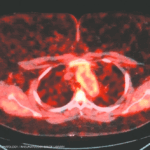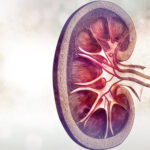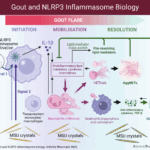In addition to the impediments to consistent, high-quality care suffered by all incarcerated individuals, incarcerated patients with rheumatic disease face challenges specific to the treatment, management & monitoring of rheumatic conditions.

Subcategories:EthicsLegal UpdatesLegislation & AdvocacyResearch Rheum
The ACR/CHEST ILD Guidelines in Practice, a video
In collaboration with the American College of Chest Physicians, the ACR released two new comprehensive guidelines aimed at improving the screening, monitoring, and treatment of patients with interstitial lung disease (ILD) secondary to systemic autoimmune rheumatic diseases (SARDs). Recently, Sindhu R. Johnson, MD, PhD, professor of medicine at the University of Toronto, Canada, director of the Toronto Scleroderma Program and principal investigator for the guideline, and Elana J. Bernstein, MD, MSc, Florence Irving associate professor of medicine in the Division of Rheumatology at Columbia University, New York City, and co-first author, presented a webinar to talk about how the guidelines were developed and present some of the recommendations and their rationale: Watch the recording now!

Katherine Terracina, MD, & Prajakta P. Masurkar, PhD |
In addition to the impediments to consistent, high-quality care suffered by all incarcerated individuals, incarcerated patients with rheumatic disease face challenges specific to the treatment, management & monitoring of rheumatic conditions.

Bryn Nelson, PhD |
Recent research led to development of a cumulative genetic risk score for Takayasu arteritis, identifying differing susceptibility between groups with different genetic ancestries.
Aetna recently notified practices about the launch of its Combined Benefit Management Drug List, which will result in romosozumab-aqqg (Evenity) and infliximab (Remicade) moving to pharmacy-only coverage on July 1. The ACR is working to oppose this change.

At a session of ACR Convergence 2024, speakers shared key elements of the new guideline on the screening, treatment and overall management of lupus nephritis in children and adults.1 This guideline attempts to balance the risks of medication side effects with the important goal of preserving kidney function. This is the ACR’s first lupus guideline…

AURORA 2 Voclosporin, a novel calcineurin inhibitor (CNI), is associated with a favorable metabolic profile with regard to lipids and glucose, and a predictable pharmacokinetic profile, resulting in no need for the therapeutic drug monitoring required of other CNIs. AURORA 2, a double-blind, phase 3 study, evaluated the longterm safety, tolerability and efficacy of voclosporin…

In this study, Fava et al. investigated longitudinal autoantibody profiles in a racially diverse cohort of patients with lupus nephritis to define noninvasive serological biomarkers of histologic class and one-year treatment response to standard of care. In addition, the researchers determined how these biomarkers changed over time to provide further insights into treatment response and…

Katie Robinson |
“B cells are central orchestraters of autoimmune disease by contributing to autoantibody production, antigen presentation and cytokine production,” says Georg Schett, MD, head of the Department of Medicine 3 (Rheumatology and Immunology) of the Friedrich-Alexander University Erlangen-Nürnberg, Germany. “B cells can be inhibited by monoclonal antibodies and chimeric antigen receptor (CAR) expressing cells.” Dr. Schett…

Renal arteriosclerosis is common in patients with lupus nephritis and occurs two decades earlier than it does in people without the condition, say investigators in a study that examined the prevalence of renal arteriosclerosis in patients with lupus nephritis compared with healthy controls.1 The finding suggests that renal arteriosclerosis could be used as a biomarker…

Katie Robinson |
Understanding the role of NLRP3 inflammasome activation in gout flares points to potential of NLRP3 inflammasome inhibitors as new treatment option.

Leslie Mertz, PhD |
Incoming Arthritis & Rheumatology Editor-in-Chief Dr. S. Louis Bridges Jr., MD, PhD, discusses his path to rheumatology and outlines his vision for the journal.